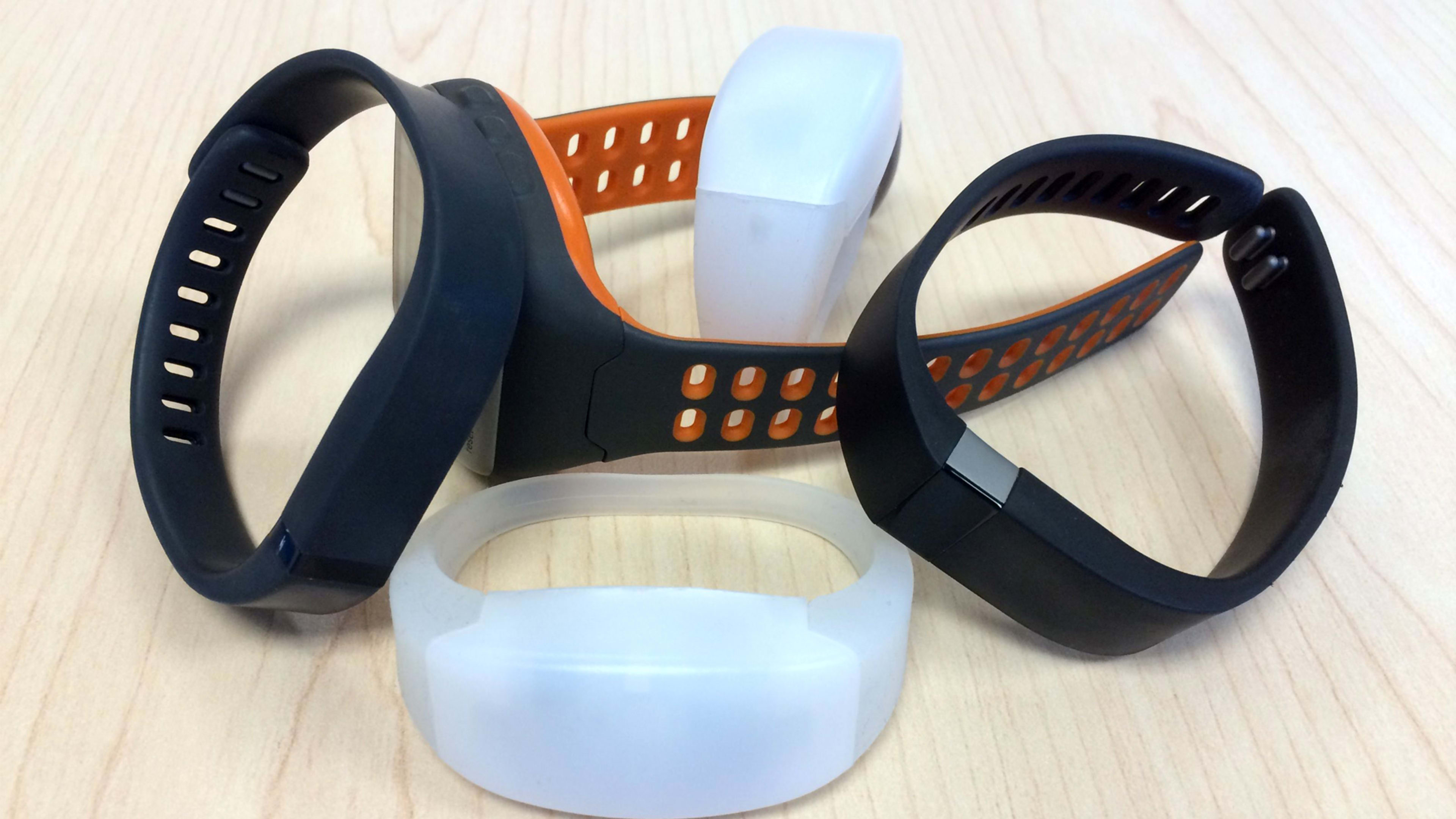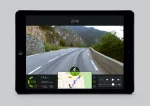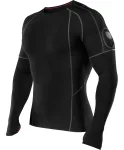It’s no surprise that the wearable tech craze is focused on hardware. After all, it’s the device we’re referring to when we say something is “wearable.” But soon these gadgets will become an afterthought. The real impact of computing’s next phase will be to make software wearable.
Big players in the wearable space seem to know this. Nike announced a few months ago that it is getting out of the fitness hardware business. The company will refocus its energy on fitness apps, solidifying an imminent end to in-house updates of Nike’s FuelBand wearable fitness tracker. Then, at the end of June, Google announced its Google Fit developer platform for Android, also without a Google-branded device. And Apple has unveiled iOS 8’s HealthKit, with no Apple-branded activity tracker or “iWatch” anywhere to be seen.
“The physical device and any sensors that may be embedded are frankly along for the ride,” says Jason Krikorian, general partner at the investment firm DCM. While it’s good to put effort into the design of a wearable fitness tracker, the device just becomes the means to collecting data. The real power in the UX will be what the software does with the data.
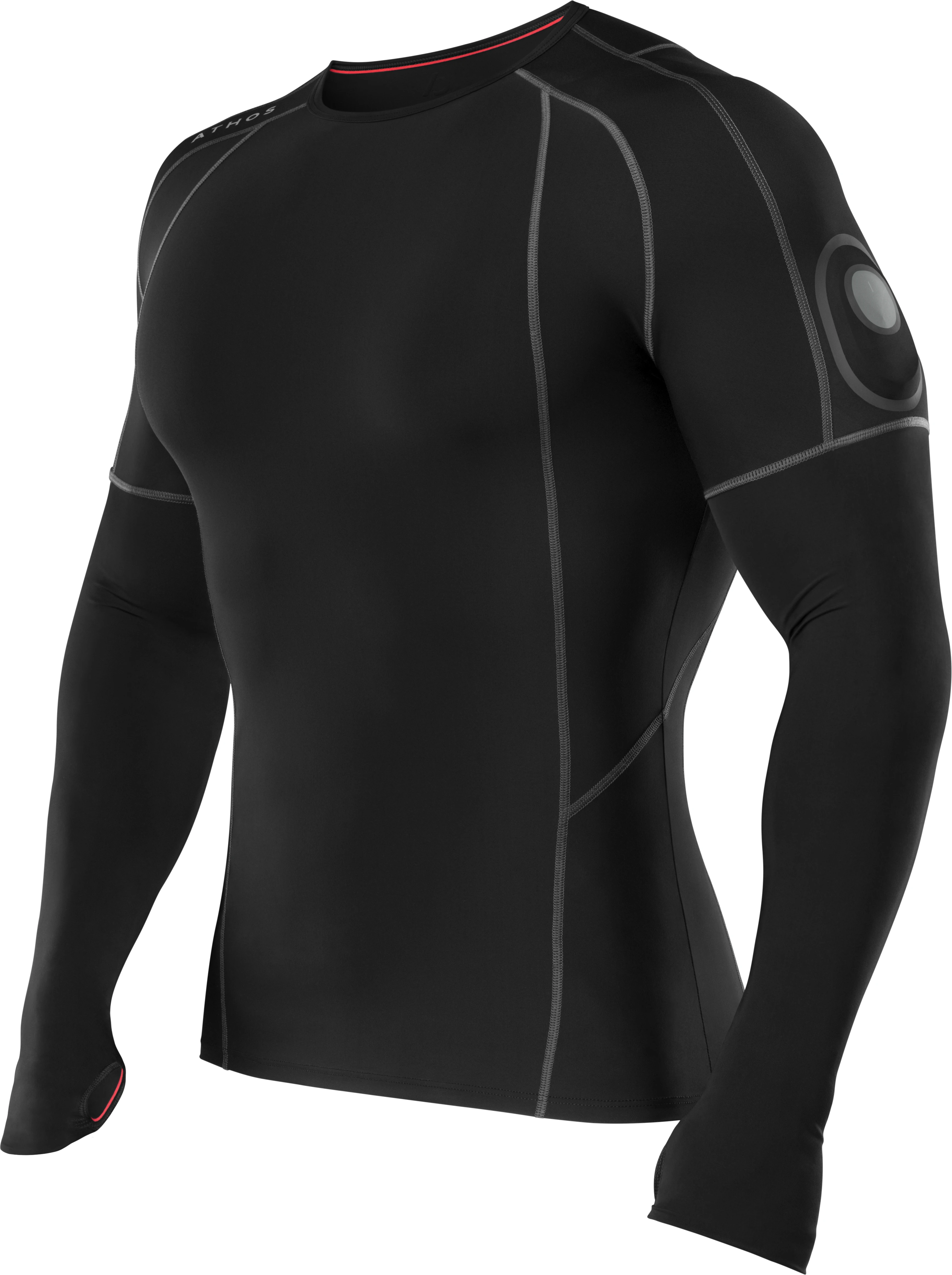
Wearable Tech Meets Apps
Of course, there’s an ecosystem under development here. Wearable gadgets that help people lead healthier lives and get more out of their workouts eventually sync up with software of some sort. Pedometers, the most common wearable fitness devices, go hand in hand with apps. The Jawbone UP relies on its app to provide a complete product to its user. And the Fitbit has become the center of a genuine third-party fitness-app boom. Devices and apps from Mio look promising too.
“It’s about taking physiological data, but turning it into answers that you can take action upon,” says Jake Waxenberg, who does marketing and business development at Athos, which has a product in the works that tracks electrical muscle activity. Using special form-fitting garments (think Under Armour), sensors embedded in the fabric send data about muscle activity back to your phone.
The company stresses the importance of its users interacting with the dedicated app. “We wanted to create something that was actionable,” says Athos CEO Dhananja Jayalath. He says that although understanding how fast your body can modulate your heart rate can indicate how in shape you are, getting an idea of how your muscles work can give you goals to work on from set to set. It’s what Jayalath and Waxenberg like to call “actionable insight.”
Users are meant to consult Athos’s mobile app between workout sets to understand how much they have worked each muscle according to a color-coded map of the body. An “Athos Score” sums up how much physical effort the user has spent during a workout, interpreting muscle effort, breathing rate, and time spent actively moving. So, the user does not see muscle activity data points over time. She sees Athos’s interpretation of its device’s output. From there, she can tweak her next workout set.
“The reality is that hardware has very little value, over time, to a consumer,” says David DeWolf, CEO of 3Pillar, a software solutions firm that helps wearable hardware companies develop companion apps for its products. “It’s fun, it’s sexy; they’re things that early adopters want to play with. But, over time, the value comes from the insight, the analytics that gives us software that runs on these devices or integrates with these devices.”
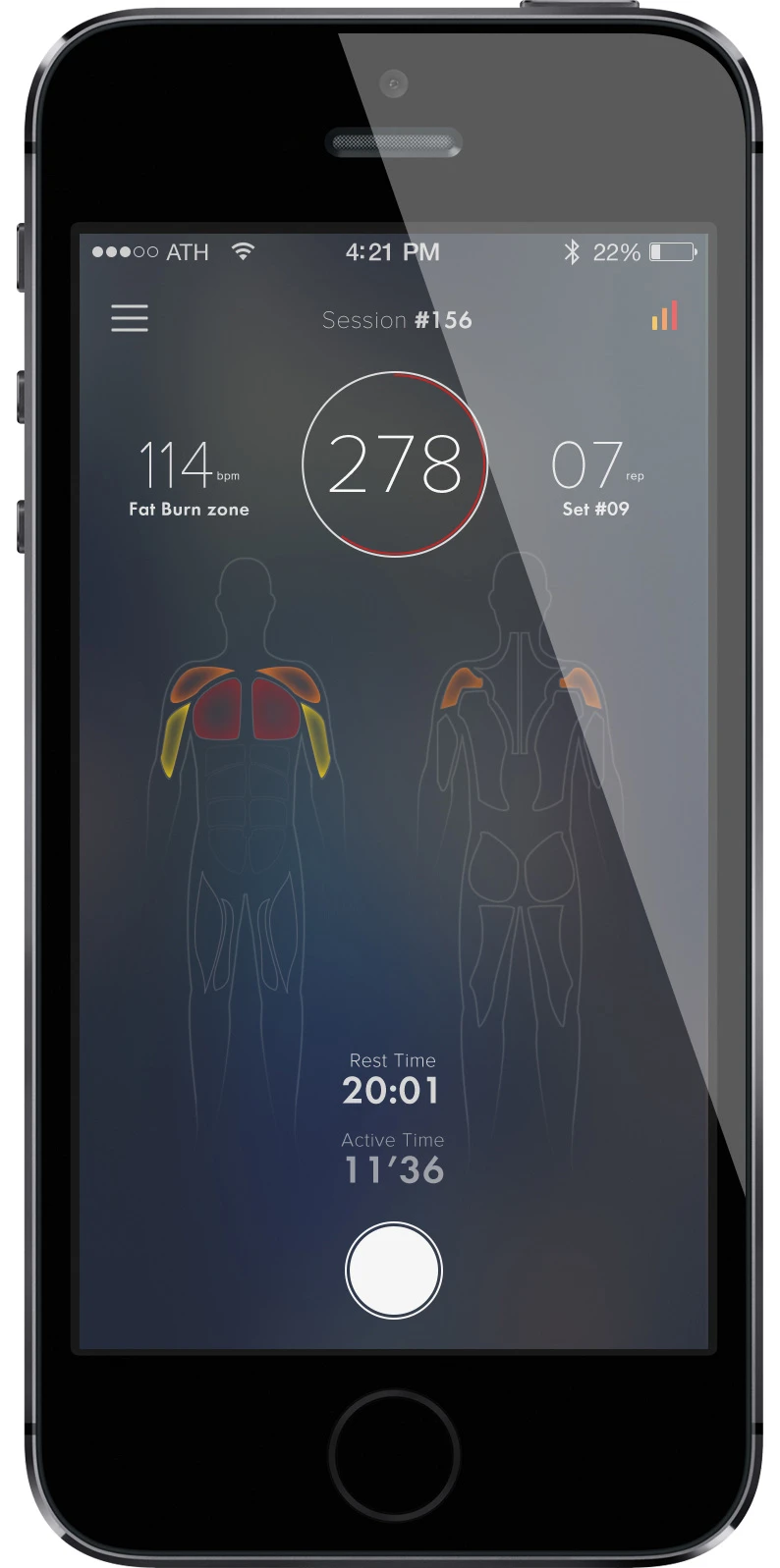
Unclear Data Collection
Software’s growing hold on the wearables industry might not have come at a better time. As wearable sensors creep into more types of designs, their data-sensing capabilities become more abstruse. But the user does not need to analyze the raw data or assess its validity, since the software app distances her from it. She is principally interested in the app’s insight.
Increasingly more companies are trying to fit data sensors into the objects that you use every day. In the fitness world, wrist wearables are becoming the standard, as popular activity trackers show. And clothing is becoming an area of development, in the case of Athos, among others.
There is, however, an issue with putting biometric sensors into commonplace objects. To take most types of physiological data, placing the appropriate sensors on the right spot on a subject’s body requires extensive preparation and specific techniques.
The most reliable way to measure heart rate is to fix a sensor around your torso with a chest strap, but wearables companies peddle a wrist-worn design. It is more practical for the average gym patron to wear a discreet gadget than donning an uncomfortable chest strap under his or her clothing. Historically, however, wrist-worn heart rate monitors have had problems measuring heart rate when a user began to move faster and faster, which typically happens during a workout.
The Basis Watch–which is still on the market despite technical issues–is one of the wrist-worn heart rate monitors that has been shown to choke during periods of user movement. The watch now comes with a disclaimer saying that it most likely will not work when the user moves. “But it never worked,” says Liz Dickinson, CEO of Mio. “The minute you started to move, the heart rate data completely stopped getting a realistic or practical number.”
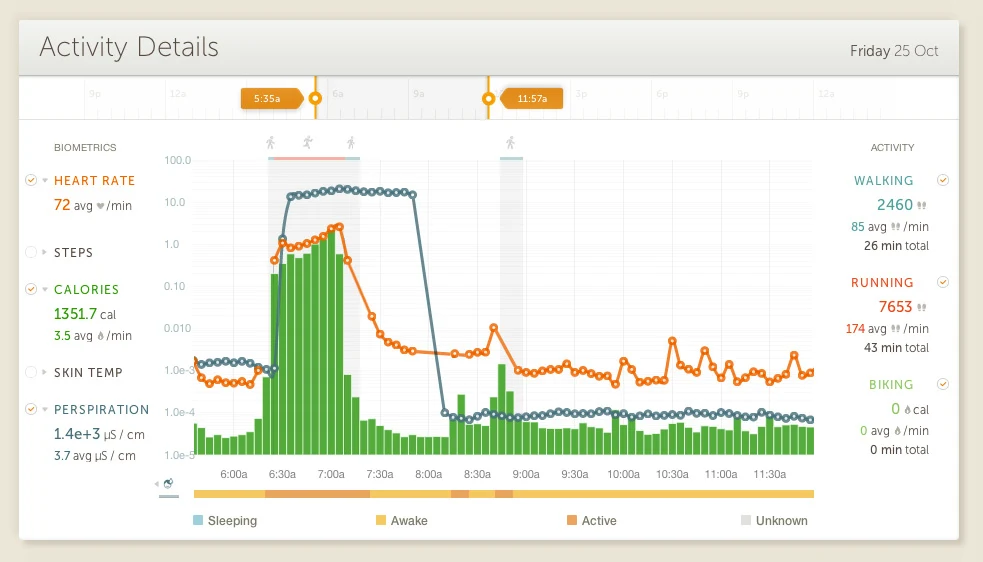
Recent technology has made it possible to better measure heart rate without the chest strap, enabling wrist heart rate monitors, like Mio’s, to thrive. Mio now uses an algorithm from Philips to filter out ambient noise, like body movement and activity from tendons, to obtain clear biometric signals. Dickinson assures us that Mio’s products provide the most reliable continuous heart rate monitoring technology in wrist wearables on the market.
Like heart rate monitoring, traditionally measuring muscle activity requires a distinct data-collection method. Athos built its wearable myoelectric sensing technology on the principles of electromyography, or EMG. Measuring EMG signals from the muscles typically requires placing adhesive onto or invasive electrodes into the widest part of the muscle, called the belly. Athos’s design uses neither type of sensing method.
“Since we don’t use medical electrodes, we don’t use a lot of the other medical electrodes’ big systems’ techniques for shielding the noise,” says Athos’s Jayalath. And building sensors into clothing introduced even more noise that is typically not there during traditional EMG recordings.
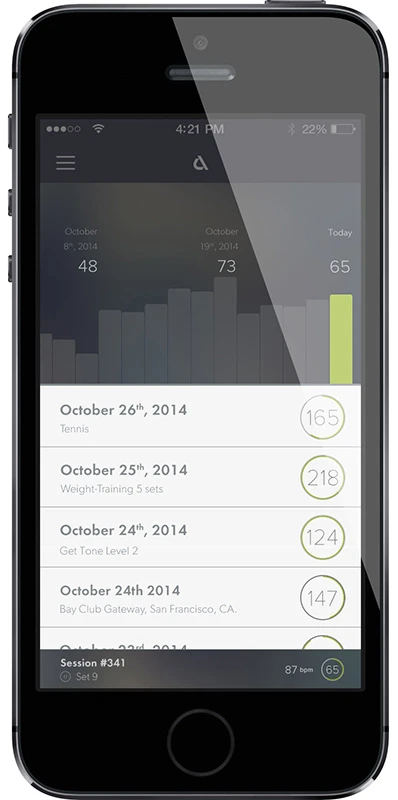
So Athos has spent much of its research and development time until now figuring out how to obtain intelligible muscle signals with its setup, minus the noise. Now, Athos uses an in-house model to extrapolate muscle activity in each muscle group after normalizing each data signal to a baseline that is unique to each user. “A lot of the work that we’ve put in has been going into algorithms that are smart, hardware that is very new, and using a very different approach that standard electromyography has been to capture the signal accurately,” says Jayalath.
Athos plans to roll out its myoelectric gymwear this fall, but it had originally announced shipments for spring 2014. Jayalath attributes the delivery delay to manufacturing complications.
Even if the biometric signals from wearable devices don’t completely align with medical-measurement standards, consumers will place more value on the insight that a company can give on the data. “It’s not about what’s more accurate, it’s about what’s the most actionable. How can I use it to improve my day-to-day life?” says 3Pillar’s DeWolf. “But accurate to the nth degree at the end of the day for a consumer doesn’t really matter.”
It’s About Changing Behavior
What matters most to wearable tech users is what the data can teach them to improve their lives. An app’s “actionable insights” do just that.
“The real goal is behavior change. And to effect that, the experience must deliver insights that are actionable and motivational,” says DCM’s Krikorian.
Just before founding Mio, Liz Dickinson had another child, bringing the total to three. With her mounting responsibilities pulling away at her free time, she realized how scarce her time at the gym was and set out to optimize it. She ended up founding an entire company to develop a wrist-wearable fitness tracker that could motivate her to get the most out of her workouts before falling back into work and home responsibilities. “When you only have an hour or 45 minutes, you want to be darn sure that it’s the best that it can possibly be,” says Dickinson.
Recognize your brand’s excellence by applying to this year’s Brands That Matter Awards before the early-rate deadline, May 3.
